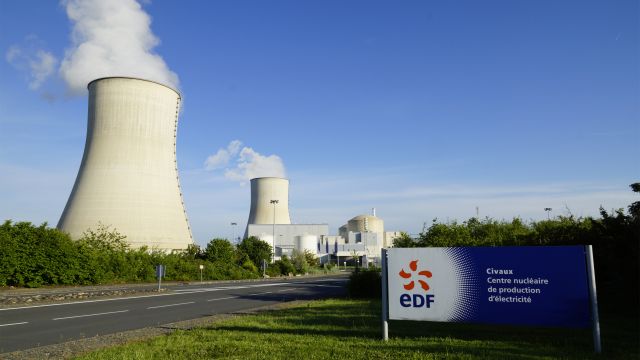
Information on the primary system leakage in the French Civaux 1 NPP
The NPP has been shut down since August 2021 and is currently undergoing a comprehensive safety review to be carried out every ten years in accordance with French regulations (so-called visite décennale; this is a prerequisite for operation for a further ten years). The pressure test, in which the primary system is subjected to a pressure of 206 bar instead of the usual operational pressure of 155 bar to check for leaks, is part of this safety review. In pressurised water reactors such as the one at Civaux, the primary system essentially consists of the reactor pressure vessel (RPV), in which the reactor core is located, and the adjoining reactor coolant circuits.
The leakage occurred in one of several pipes that lead from an adjacent room below the RPV to the RPV bottom head and connect there to small nozzles. In this pipe there is another, thinner guide tube through which a so-called instrument assembly is inserted at regular intervals during operation into the RPV from the aforementioned room in order to measure the neutron radiation prevailing there with a special sensor in the area of the reactor core. With these pipes leading through the RPV wall from below, the RPV in the Civaux NPP and a number of other French NPPs differ from the RPV design of the German pressurised water reactors, where the RPV bottom head is fully sealed.
During the pressure test, the end of the outer pipe that is located in the adjacent room and through which the instrument assembly can be inserted was sealed with a plug. This plug came loose at a pressure of just under 200 bar. As a result, water escaped from the RPV and the primary system. In addition, as a result of the high pressure gradient, the inner guide tube was pushed out of the outer pipe into the adjacent room.
In principle, it is possible to shut off the pipe by means of valves located in the adjacent room and thus prevent water from escaping from the primary system. In the present case, however, it was decided not to do so due to the comparatively high level of radiation that prevailed in the adjacent room after the plug failed, which would only have allowed a stay of a few minutes within the legal limits. This radiation came from the guide tube that had been pushed out and in whose wall material highly radioactive substances had formed in the RPV during reactor operation as a result of so-called activation. The leaked water, on the other hand, was only slightly contaminated because the fuel assemblies had been unloaded from the RPV for some time. Therefore, there had been no source of neutron radiation in the RPV since then that would have led to an activation of constituents in the cooling water during power operation.
On 10 November, the operator announced that, with the help of a robot, it had been possible to recover the guide tube and move it to a radiation-shielding facility that had been set up in another room. The water leakage was then stopped. The water that had escaped by then had been completely collected and stored in a tank for subsequent treatment. There had been no leakage of radioactivity into the environment during the event, nor had there been any increased radiation exposure of personnel.